As time goes on, more and more homeowners insist on finding easier ways to care for their garden beds and landscaping. The secret to turning your high-maintenance flower beds into a low-maintenance area that’s still full of beauty is by planting perennial wildflowers.
Although some people consider wildflowers weeds, they make a true work of art mixed with various species. Wildflower gardens are full of flowers with different heights, shapes, colors, and textures that bring a home to life and require little to no work.
Although many people think they can purchase non-GMO wildflower mix and throw it on the ground to start growing, that isn’t necessarily true. If you want the least effort required possible, make sure you’re purchasing a wildflower mix with only native plants.
Native plants can grow naturally in that area and are much easier to care for than wildflowers from another region. Once they establish themselves, wildflowers are extra-hardy and self-seeding, meaning that all you have to do is sit back and enjoy the view.

- How to Prepare for a Wildflower Garden
- Go-to Perennial Wildflowers: Shasta Daisy (Bellis perennis)
- Lupine (Lupinus polyphyllus)
- Blanket Flower (Gaillardia pulchella)
- Mexican Hat Flower (Ratibida columnifera) – Bold Flowers that are Easy to Maintain
- Blue Flax (Linum lewisii)
- Yarrow (Achillea millefolium)
- Wildflower Host Plants: Milkweed (Asclepias syriaca)
- Purple Coneflower (Echinacea purpurea)
- Primrose (Primula vulgaris) – Sweet Perennial Flowers
- Sweet William (Dianthus barbatus)
- Gayfeather (Liatris spicata)
- Late-Blooming Wildflowers – New England Aster (Symphyotrichum novae-angliae)
- Tickseed (Coreopsis lanceolata)
- Black-Eyed Susan (Rudbeckia hirta)
How to Prepare for a Wildflower Garden
Like most other plants, the best way to prepare for new plants is to prep the site and make sure the area meets all the needs of the plants you’ve chosen, whether you add dwarf shrubs and bushes with your wildflowers or stick just to blooms. Most perennial wildflowers and wildflower annuals prefer locations with full to partial sun to sustain themselves.
Keeping weeds out of the garden is especially important, so be sure to pluck them as they spring up. Another critical step in preparing your site is to shallowly till the land to uncover hidden weeds without encouraging more to grow.
Tilling the dirt about three inches deep is ideal. Once tilled, rake the soil and place the seeds in the grooves so they contact the ground.
If you’re using a packaged seed mix, make sure to read the packaging to ensure the number of seeds you have covers your desired area. Once the seed gets spread, water it and spread a thin layer of mulch on top. The wildflowers usually germinate within three weeks.
Add a few dwarf bushes with flowers and other plants for diversity and keep your garden blooming for at least three seasons.
Go-to Perennial Wildflowers: Shasta Daisy (Bellis perennis)

Some of the most common perennial wildflowers are daisies. These daisies are some of the most beautiful with their sunny yellow middle and perfectly white petals.
These flowers bloom for long periods that last from spring to fall. Their heights range from six inches to four feet tall. They are great for attracting butterflies, have minimal pests and diseases, and repel deer and rabbits.

Plant Shasta daisies in areas with light shade to full sun. They love landscapes with well-draining soil that is rich with organic matter. Plant them in the early spring or summer after the danger of frost passes.
Lupine (Lupinus polyphyllus)

Lupine is a perennial wildflower species with a bold look. Lupine flowers form tall, colorful cones, and they are known for flourishing in even the harshest environments, including sandy soils, those with insufficient nutrients, and high elevations.
They are native mostly to the Eastern United States. Lupine is hardy in USDA hardiness zones four through eight and has a bloom time from three to five weeks.
Each plant grows up to five feet high. Regions with cool summers require fully sunny locations, but warmer areas allow them to tolerate partial shade as well. Keep the ground evenly moist to help the roots develop.
Blanket Flower (Gaillardia pulchella)

Blanket flowers are some of the most colorful additions to a wildflower meadow. These perennial plants are related to daisies and are resilient. You’ll often spot them along roadsides and in open spaces.
Blanket flowers have stems reaching three feet lost and blooms that last from early summer until autumn. For longer bloom times, deadhead the flowers as they begin fading.
Blanket flowers enjoy lots of sunshine since they are native to the central United States and Mexico. Keep the soil from getting too soggy since they don’t like having wet feet.
Mexican Hat Flower (Ratibida columnifera) – Bold Flowers that are Easy to Maintain
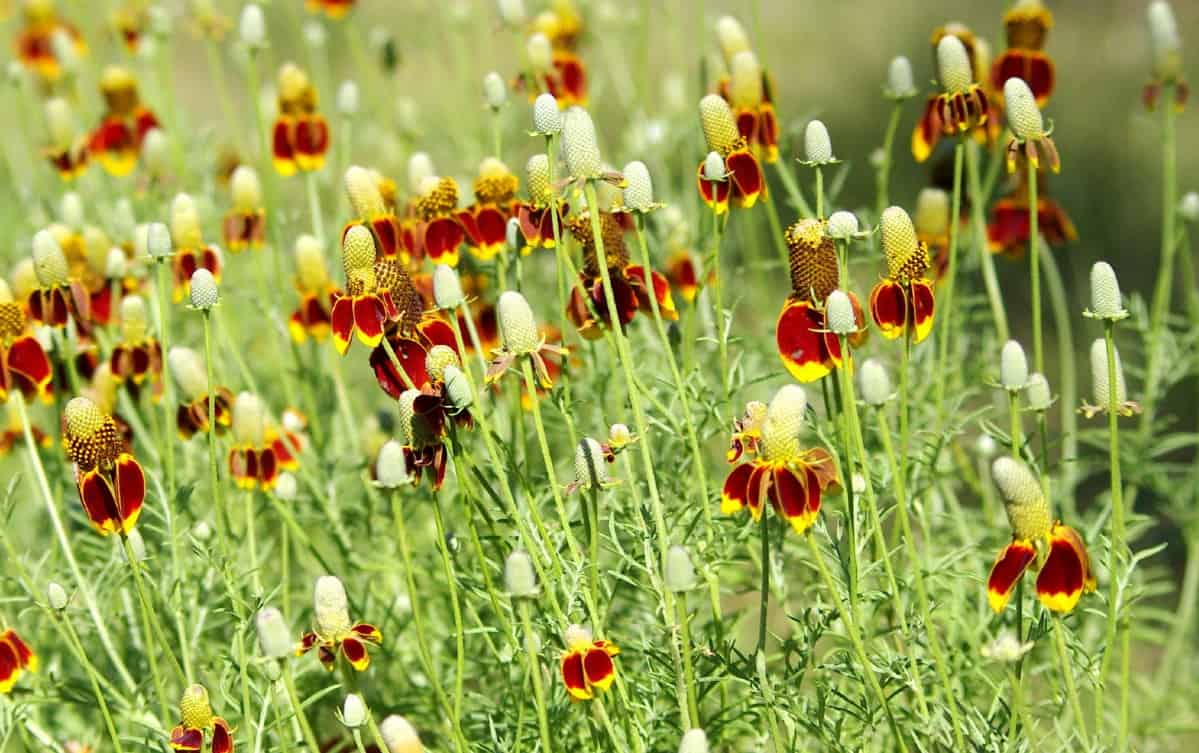
The Mexican hat flower is easy to spot because of its distinguishable, tall, center cone closely resembling a sombrero. These flowers are fast spreaders and are native to America’s prairies.
They reach three feet tall and have drooping red and yellow petals. The Mexican hat flower is hardy when grown in well-draining soils and full sun. They are extremely drought tolerant but benefit significantly from regular watering.
Blue Flax (Linum lewisii)
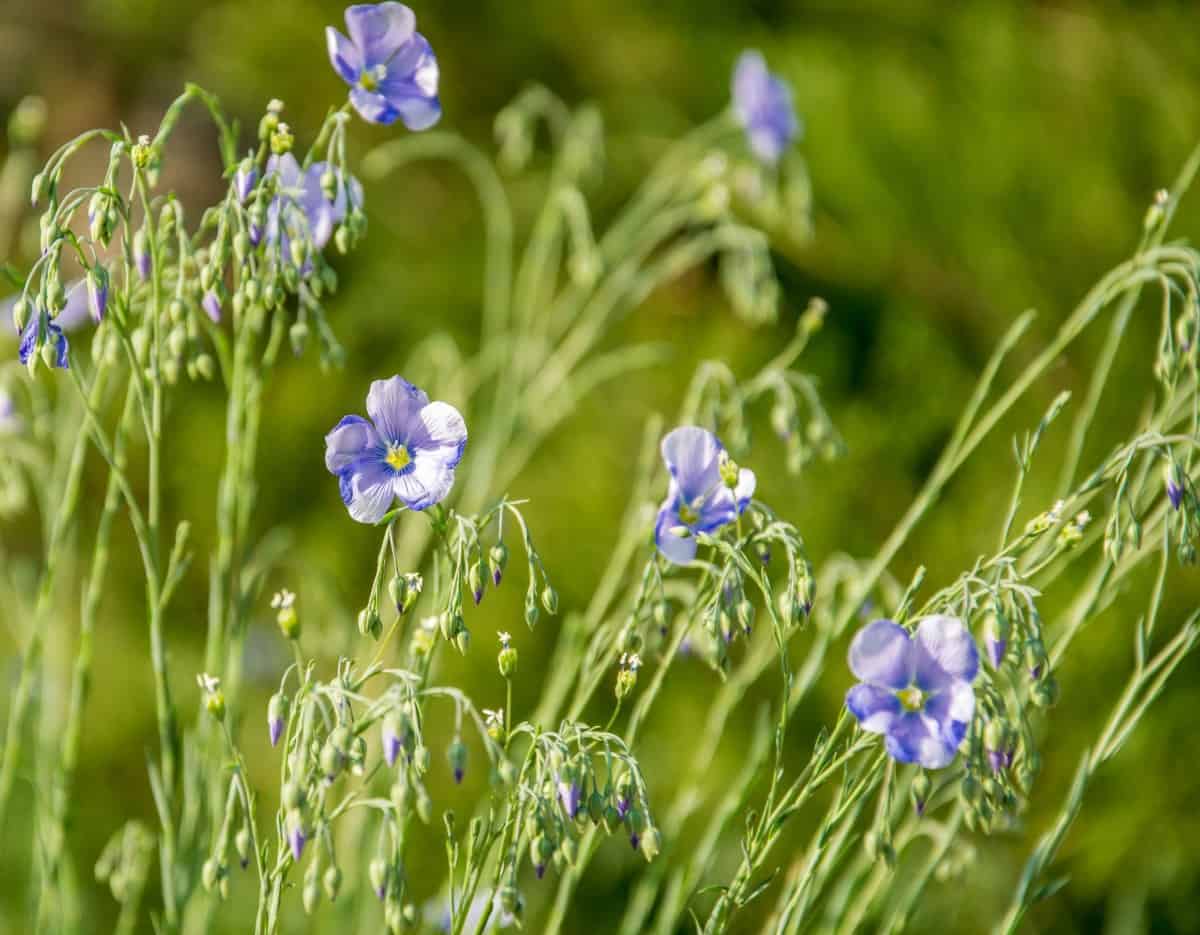
If you live in California, you’ve probably spotted blue flax before. Blue flax flowers are perennial plants with a high success rate in all parts of the United States. The flowers begin blooming every May and last until September.
The blooms are abundant and blue and are often grown for linseed oil. Blue flax begins seeding throughout the growing season and spreads quickly.
This plant enjoys sandy, clay, and rocky soils. Soil with too much nutrition causes them to die and get taken over by other plants.
Yarrow (Achillea millefolium)
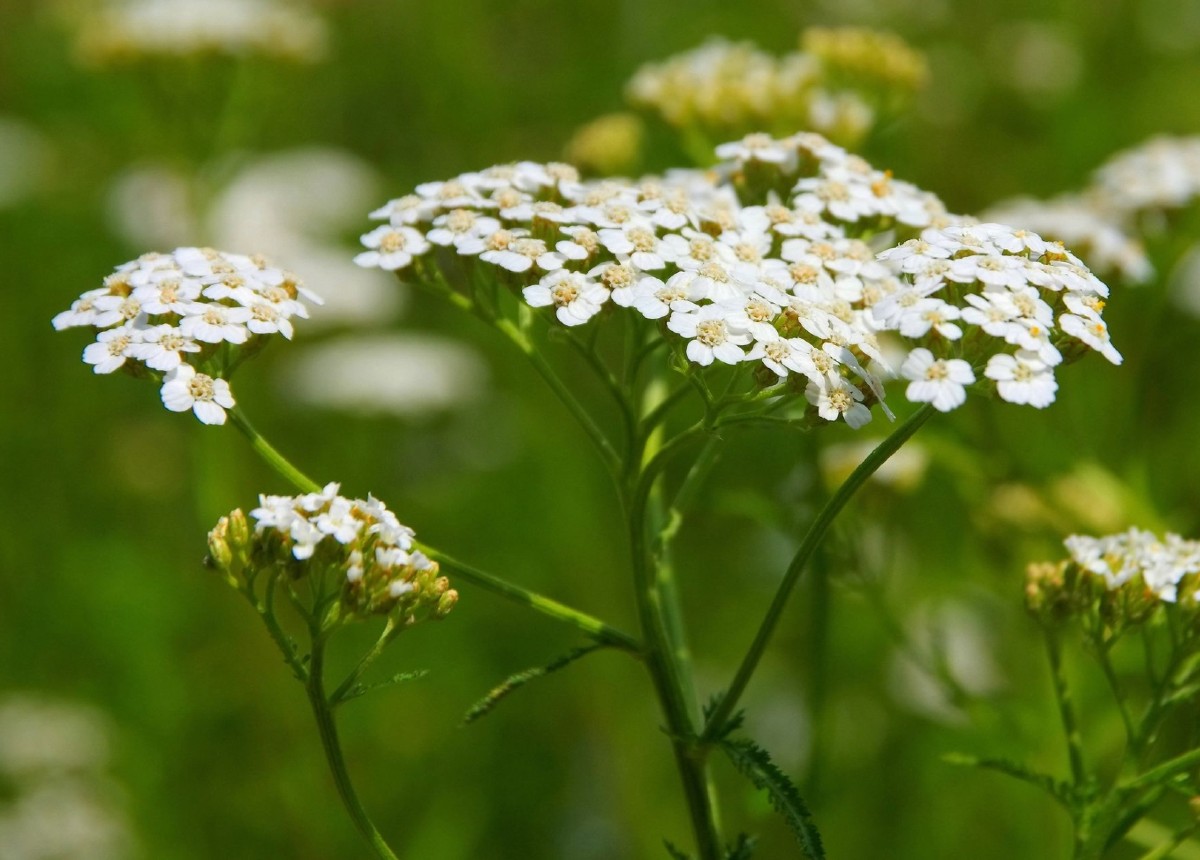
One of North America’s most popular perennial wildflowers is yarrow. Yarrow is famous for attracting pollinators and brightens up landscaping with its golden yellow blooms.
Some types come in red and pink, but yellow is one of the most popular. These plants are hardy and versatile and withstand lots of abuse. Plant yarrow during the spring or early summer.
Placing them in full sun keeps their growth compact, while the partial sun makes them leggier. The yarrow does best in hot and dry conditions, so don’t allow the ground to get overly wet.
Wildflower Host Plants: Milkweed (Asclepias syriaca)
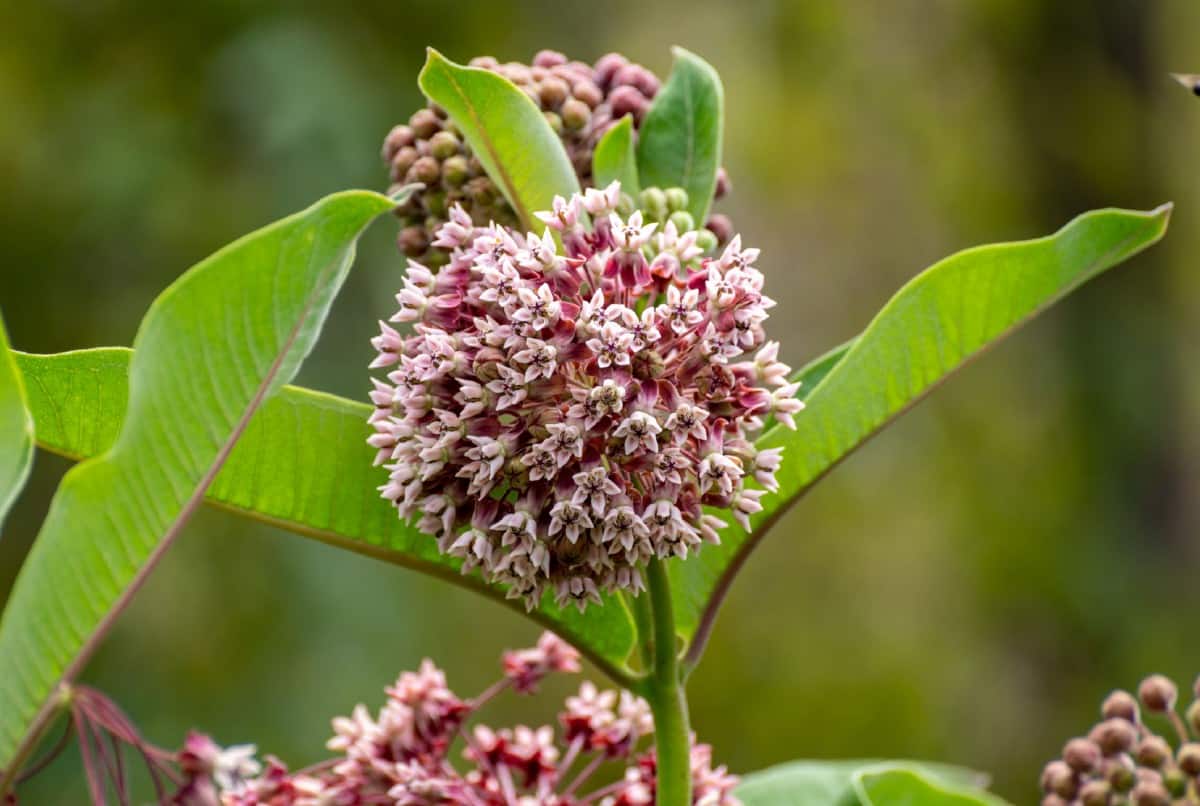
Although many people keep milkweed out of their gardens, they are perfect for wildflower gardens because they attract essential pollinators and become host plants for caterpillars and butterflies.
They can grow almost anywhere and showcase bulbs of purple flowers against green foliage. Milkweed thrives in a sunny corner of a garden bed or along the back of a border.
The plants reach two to six feet tall and blooms last from June to August. Milkweed likes having a few feet of space from other plants and benefits from mulching.
Purple Coneflower (Echinacea purpurea)
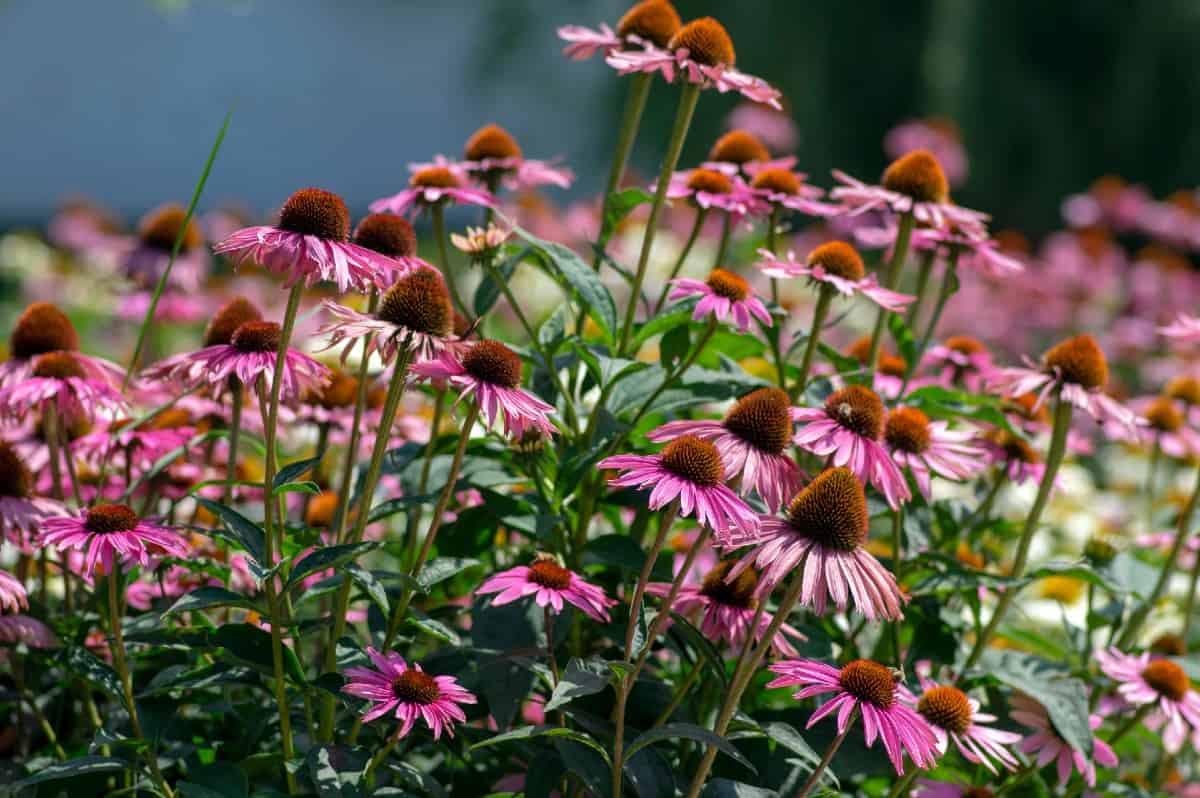
The purple coneflower is a trendy flower in North American garden beds, but did you know that these flowers were native to the eastern United States? These flowers often come in most wildflower mixes.
They have prominent brown centers with downward-facing purple petals. These plants reach 5 feet in height and have a sturdy, upright appearance.
Purple coneflowers thrive in poor soil areas as long as they have six hours of direct sunlight every day. In southern regions, they may benefit from light shade in the hot afternoon.
Once established, these flowers survive on only the rainfall and require minimal care. They are continuous bloom perennials that add a pop of color to any landscape.
Primrose (Primula vulgaris) – Sweet Perennial Flowers
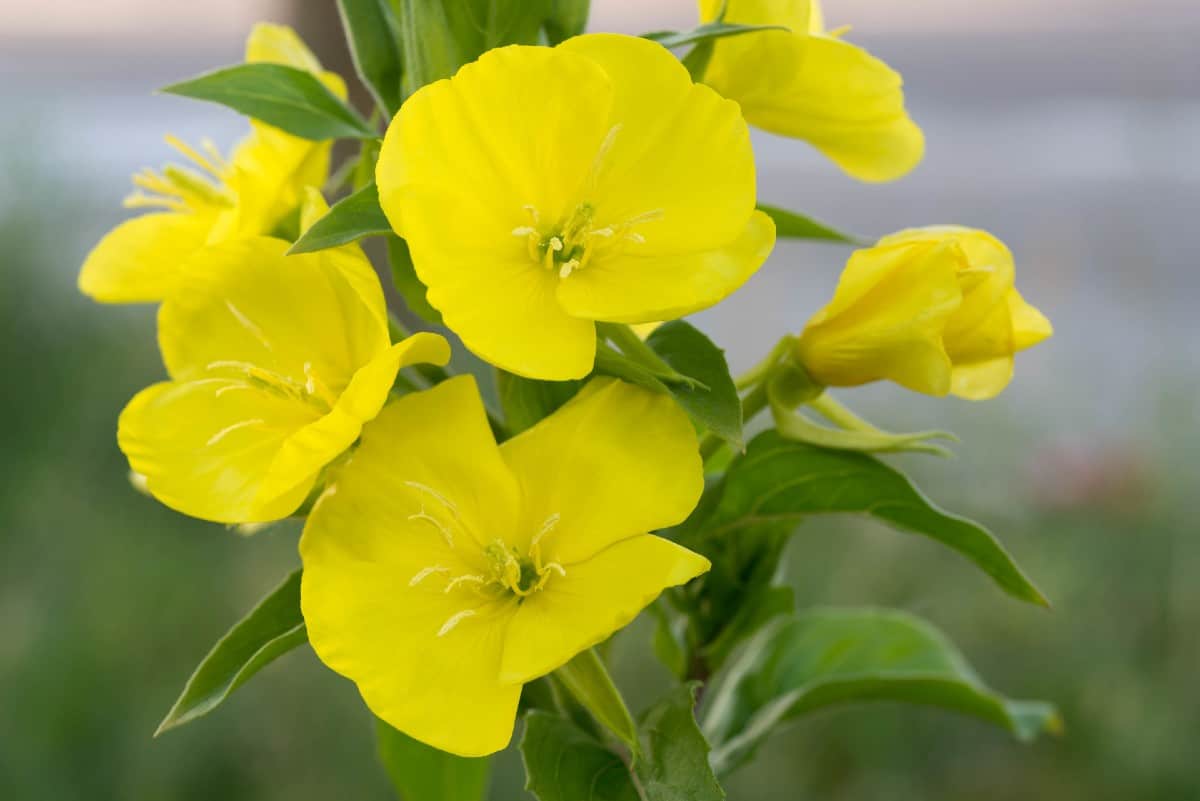
Primrose flowers start blooming in early spring and look similar to Siberian wallflowers with their circular flower shape and bright green leaves. Primrose comes in a variety of sizes and colors, and they multiply every year.
Plant primrose in lightly shaded locations and give them soil that has been amended with lots of organic material.
Space each plant roughly six to 12 inches apart and water them regularly for the first year until they establish themselves. Be sure to check the leaves regularly to keep them free from slugs, snails, spider mites, and aphids.
Sweet William (Dianthus barbatus)
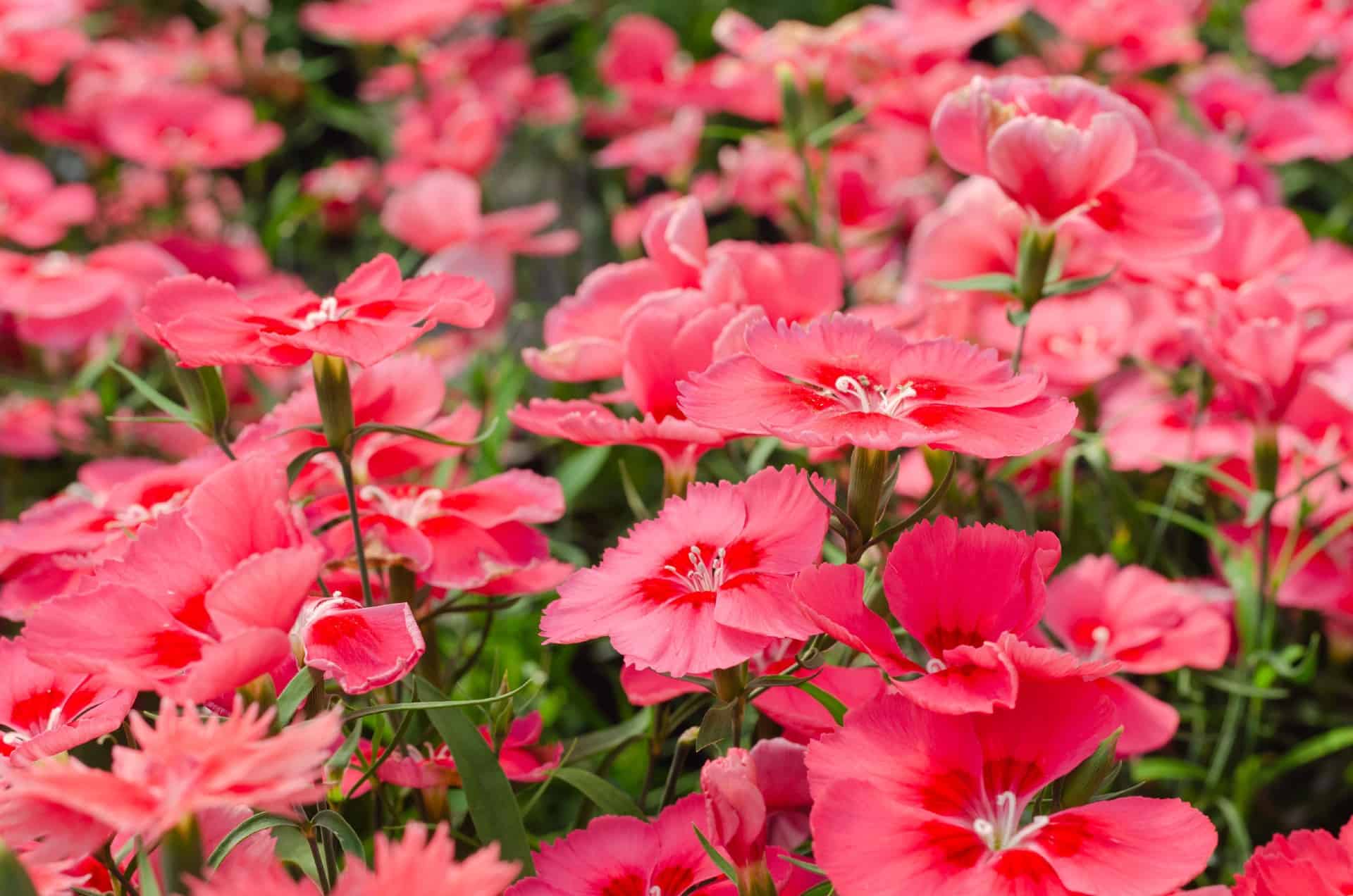
Sweet Williams are full of showy white, red, and pink flowers that hummingbirds love. They only reach two feet tall and have large, lance-shaped leaves.
They are hardy in zones three through nine and make a great addition to wildflower gardens. These flowers are biennial or annual, so make sure you choose the seeds that best fit your needs.
After you plant these flowers, they require little care. Keep the soil moist without overwatering them. Sweet Williams tolerate dry soil when necessary and benefit from liquid fertilizer applications every eight weeks.
Gayfeather (Liatris spicata)
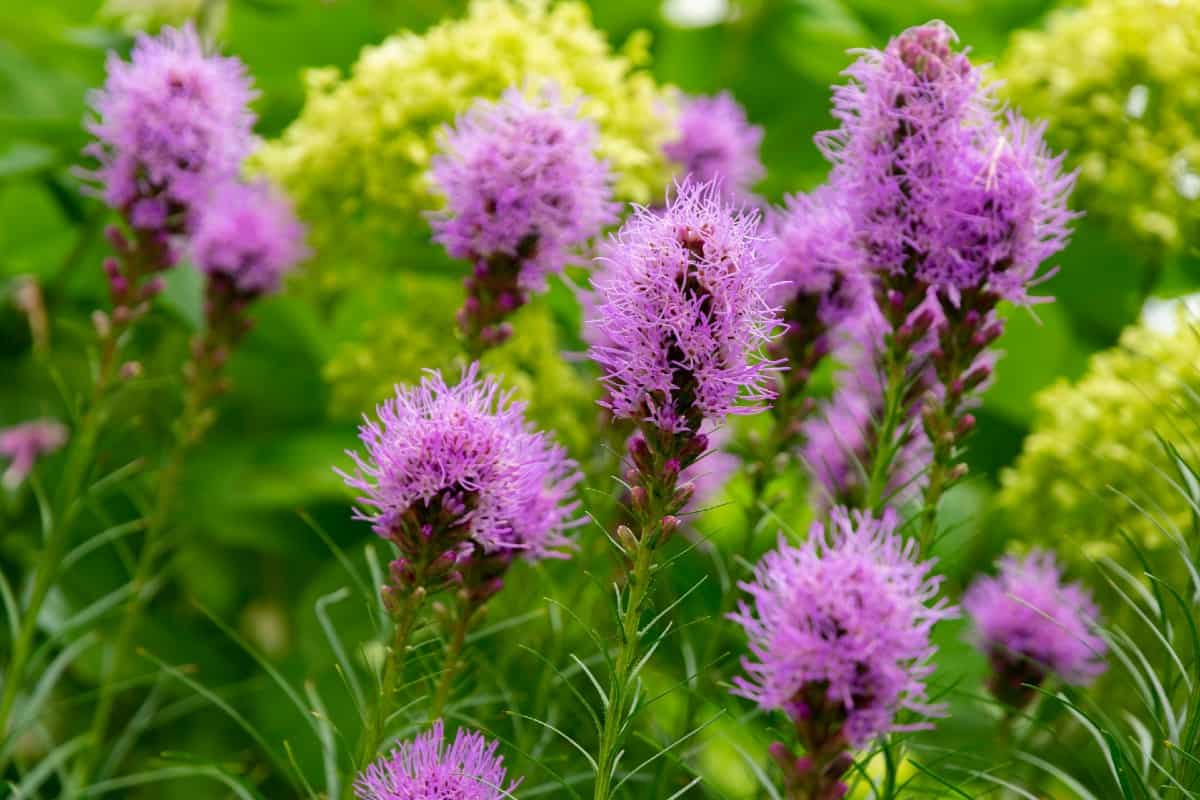
Gayfeather or blazing star is one of the most unique-looking wildflowers on this list. These plants grow tall, vertical spikes with fluffy purple, pink, and white flowers commanding attention on top.
Their leaves are thin and bright green, making sure that your eye stays drawn to the one-of-a-kind blooms. These are perfect when you want to add ornamental value around your home that lasts from midsummer to fall.
Gayfeather thrives when planted in full sun and prefers moderately fertile and moist soil. Once established, it tolerates the heat, cold, and drought.
They are also pest and disease-free. If you’re looking for more unique flowers, check out the columbine plant, Colorado’s state flower.
Late-Blooming Wildflowers – New England Aster (Symphyotrichum novae-angliae)

New England aster is a native plant that adds a burst of color to your garden. This perennial flower is easy to care for and blooms from August to October, so that color remains in your flower beds up until the last minute.
These wildflowers are native to the eastern and central United States. They showcase gray-green foliage and a variety of colorful flowers.
New England aster reaches up to four feet in height and is hardy in USDA hardiness zones four through eight. They self-seed when planted in optimal conditions and are disease and pest resistant.
Tickseed (Coreopsis lanceolata)

Tickseed, also commonly known as coreopsis, is a staple in any wildflower garden. They are what flowers bloom in summer and last longer while other perennial flowers fade.
Tickseed is similar to daisies and comes in shades of red, yellow, pink, and white. The petals have fringed edges, and the foliage is dark green. These plants are hardy up to USDA zone four and are the state wildflower of Florida.
Grow tickseed in full sunlight. They require light to germinate, so don’t bury the wildflower seed too deep under the soil, or they won’t grow. Deadhead the spent blooms throughout the year and cut them back by one-third every fall.
Black-Eyed Susan (Rudbeckia hirta)

Black-eyed Susans are some of the most well-known perennial wildflowers. These plants have a dark black or brown center with vibrant flowers and velvety leaves. These flowers are some of the simplest to grow and great for attracting pollinators and wildlife.
Black-eyed Susans prefer soil with a neutral pH level, and they do well in light shade or full sun. Deadhead the black-eyed Susan flowers as they fade to encourage more growth.
If you’re looking for something different with half the maintenance, perennial wildflower gardens may be the best choice for you. Wildflowers are amazing when mixed and fill your home with amazing sights and smells that you’ll love.
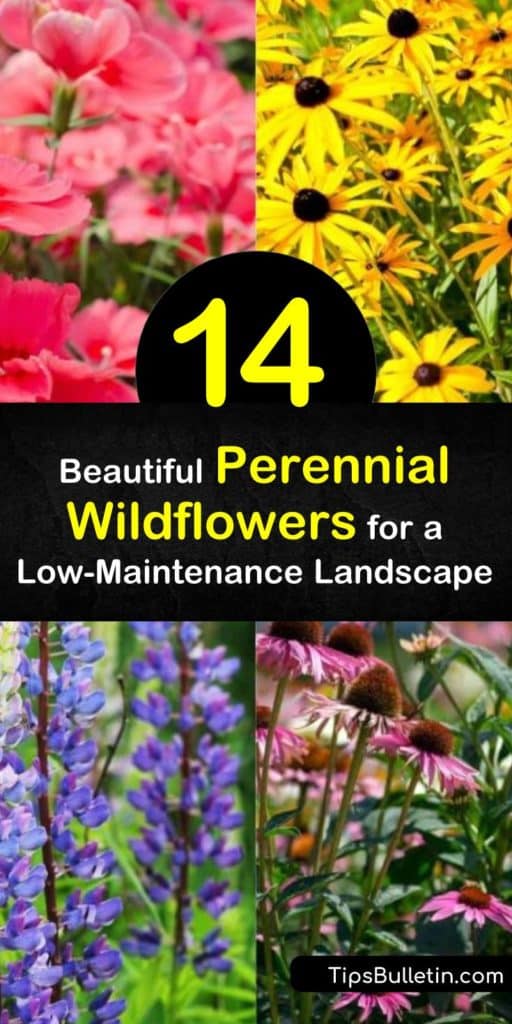
If you planted perennial wildflowers and prefer them to traditional flower beds, share this list of low-maintenance wildflowers on Facebook and Pinterest.